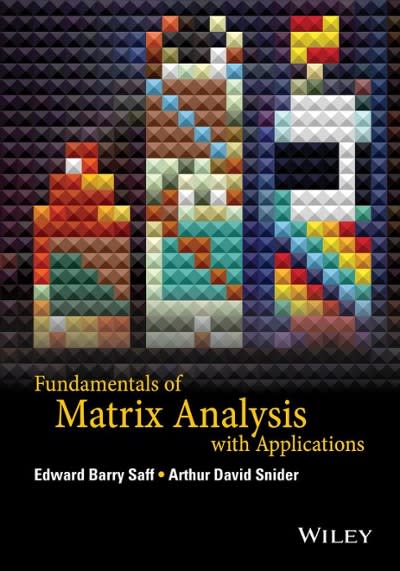Question
question 1; (Table: Infant Attention) A researcher is interested in whether infants' attention to their mothers' voices increases in the first week of life. Let's
question 1;
(Table: Infant Attention) A researcher is interested in whether infants' attention to their mothers' voices increases in the first week of life. Let's assume an established baseline exists showing that infants attend to their mothers on average 5.97 seconds on their first day. The researcher selects 15 full-term infants in normal health who experienced uncomplicated deliveries and tests the number of seconds the infants oriented in the direction of their mothers' voices on Day 7 after delivery. Fictional data are provided in the table. Table: Infant Attention
| Day 7 (sec) |
| 7 |
| 7 |
| 6 |
| 8 |
| 8 |
| 8 |
| 8 |
| 8 |
| 6 |
| 7 |
| 7 |
| 7 |
| 7 |
| 8 |
| 6 |
(M= 7.2 seconds,SD= 0.775)
Perform all six steps of hypothesis testing on these data using a nondirectional hypothesis test with alpha = .05. (partial credit will be given only if all six steps and your work is shown.
question 2; Why do researchers have to make a decision about whether to perform a two-tailed or a one-tailed hypothesis test for t tests but not for ANOVA?
question 3; A team of researchers are interested in investigating impairments in driving performance as a result of cannabis and alcohol consumption. Participants are tested in a driving simulator with varying doses of alcohol and cannabis. Participants consumed orange juice either with or without alcohol and then smoked cannabis cigarettes containing no THC, 1.8% THC, or 3% THC. Participants were then tested in a driving simulator and researchers recorded the number of driving errors committed during a 30-minute test drive.
(a) Identify the independent variables and the level of each independent variable.
(b) What is the dependent variable?
(c) What kind of ANOVA would be used to analyze these data (be sure to indicatenumber of factors and number of levels of each factor?
(d) Create a table depicting the cells of the study. Be sure to fully describe all possible cells if you cannot create a table (rich text editor may allow you to do so).
Step by Step Solution
There are 3 Steps involved in it
Step: 1

Get Instant Access to Expert-Tailored Solutions
See step-by-step solutions with expert insights and AI powered tools for academic success
Step: 2

Step: 3

Ace Your Homework with AI
Get the answers you need in no time with our AI-driven, step-by-step assistance
Get Started


